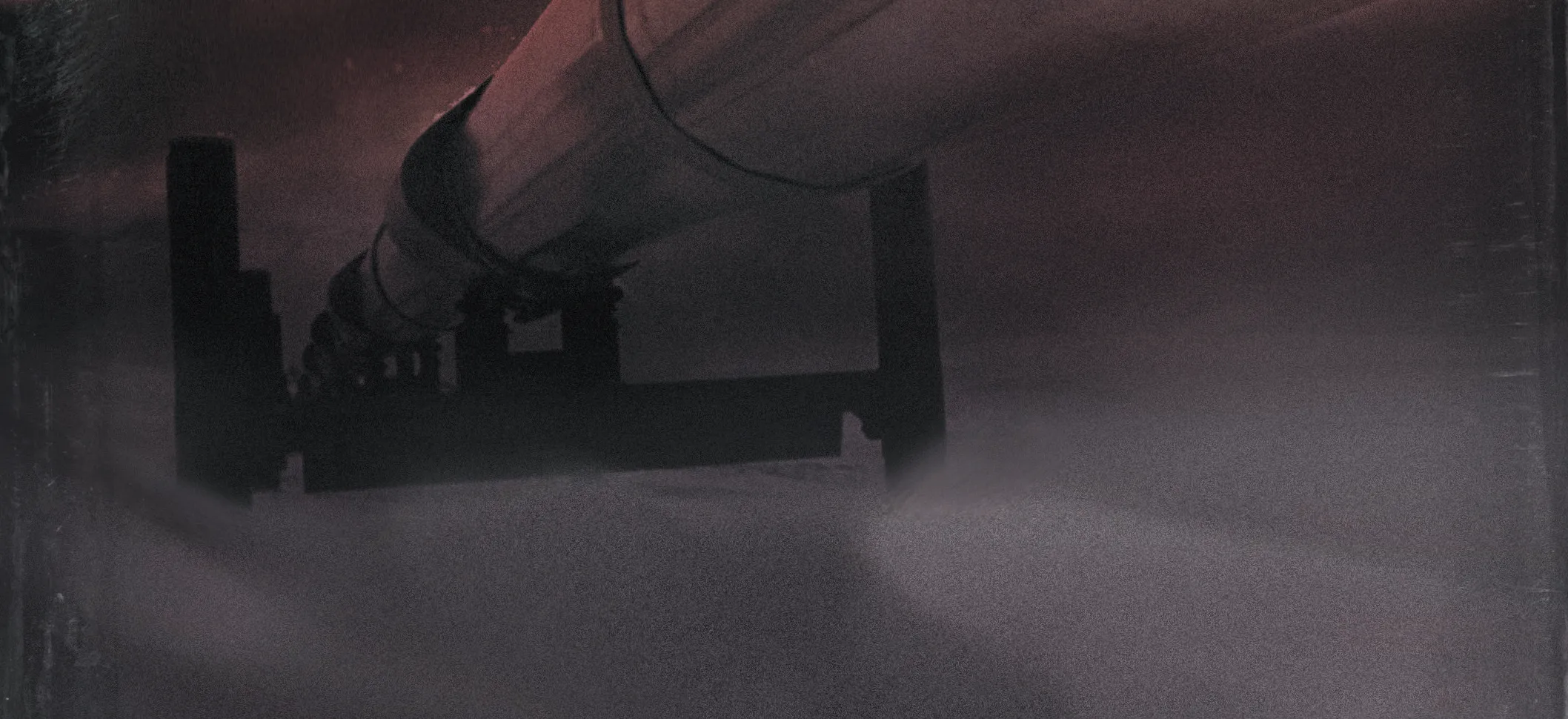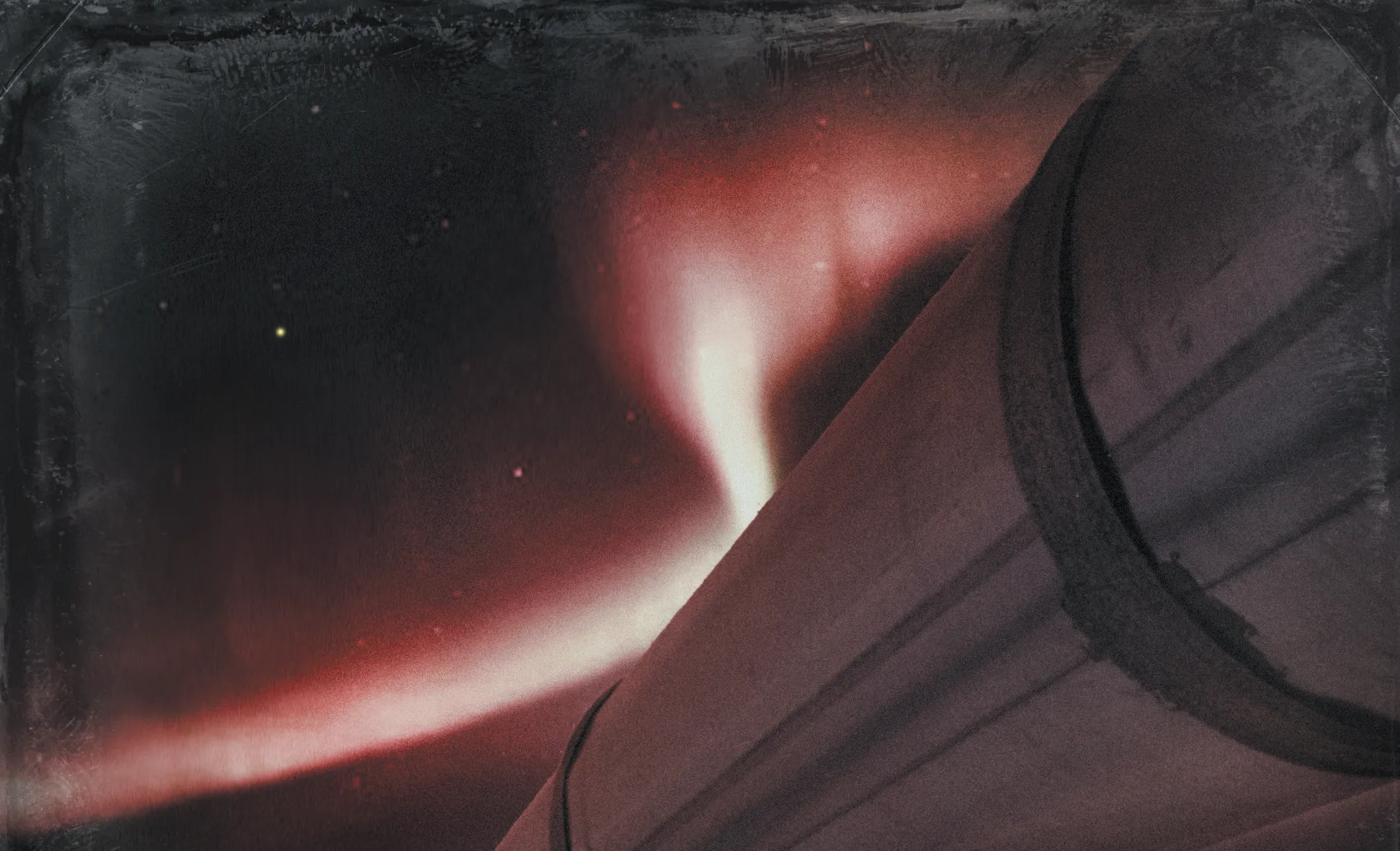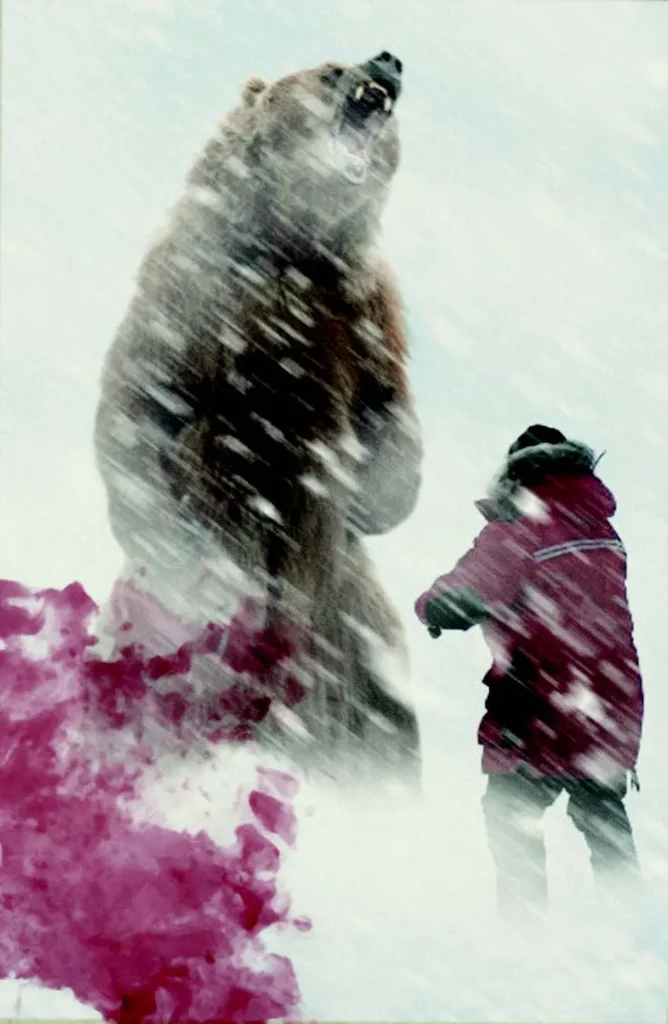The Pipeline – Session 1
In the Fall of 1986, contact was lost with Exxon
Pumping Station #31 near Telegraph Creek, BC
Canada.
Prelude
It would be a routine job. Repair the electrical wiring on a new oil pump. This was very common with new installations. Probably when someone fired up the systems Pumping station 31 was unreachable. No radio contact or whatsoever.
But this time was different. The message i received was uncommon and also the team. Usually it would consist of 4 persons. Know it was 9. Including a representative of Exxon. My employer for this year. We also have a lot of heavy armed security and a arctic guide. They probably won’t leave anything to chance.
I met the team on the airport and for long we were heading for Telegraf creek. There would be a snowcat waiting to bring us to the pumping station. Everyone was quiet. Luckily it was the pilot’s birthday so we had some distraction on the flight. And that was also the last thing i remember. There was a loud sound and then blackness. Then i felt all blood rushing to my head. When i openend my eyes i was upside down and one of the security people was busy getting me out of my seat.
Day 1
The rescue team awaken to the sound of howling wind and creaking metal. The world hangs inverted before their eyes — twisted shapes of torn fuselage, shattered seats, and shards of ice glinting in the dim winter light. Each of them dangles upside down, still strapped into their harnesses, blood rushing to their heads. The cold bites deep, seeping through clothes and skin alike.
Somewhere beyond the wreckage, a voice is screaming — distant, panicked, swallowed by the storm. The air reeks of fuel and smoke. Their heads throb with the dull ache of concussion, and fragments of memory flicker back: the roar of engines, the steady hum of conversation, the calm before everything went black.
The last thing any of them remember is boarding the plane in Vancouver.
When i looked around the front and end part of the plane was missing. Everyone was hurrying to get out of the plane. Because it was starting to slide down a hill. Quickly i gather all my stuff and was able to find water and medical kits.
The storm hasn’t let up since we crawled out of the wreck. The wind cuts like a knife, carrying snow that stings the eyes and fills every footprint before you take the next. What’s left of the plane lies scattered across the slope — jagged metal, torn seats, luggage ripped open and half-buried. It’s a miracle anyone walked away from this.
We did a quick sweep of the wreckage. At first, there wasn’t much to see — just the same twisted mess we’ve been crawling through. But then I noticed something off about the starboard engine. There’s a clean, circular hole punched straight through the casing, maybe two feet wide. It doesn’t look like fire or impact damage. Something hit it. Hard.
We managed to recover a few useful things and the others keep asking what happened, but right now that doesn’t matter.
What matters is that we keep moving, stay warm, and don’t lose our nerve. If the cold doesn’t kill us, whatever brought down that plane might.
It was cold. Very cold. And this was during the day. When we stepped outside of the plane we could not believe our eyes. The plane was almost gone. Only debris. My knee hurt alot. Luckily i had my walking stick with me. So i was able to keep up with the group. Amanda and Arwin urged us to go forward. It would be very cold the next few nights and we had to get to the pumping stationa asap.
The cold out here doesn’t care who you are. It’s not just temperature — it’s pressure, weight, silence. Once the sun’s gone, everything freezes. The wind finds every gap in your clothing, steals every bit of warmth you make. Even breathing hurts after a while.
We’ve got some gear we carried on board — thermal layers, gloves, boots — but that doesn’t make us safe. I watch them as we work. The signs are already there: shivering, stiff fingers, slurred speech. Hypothermia doesn’t hit all at once — it sneaks up, takes your strength, then your mind. Once you start feeling warm again, it’s already too late.
We’ve got maybe half an hour before the wind turns. If we don’t get going, we’ll be sleeping in the snow, trading hours for heat. I can’t let that happen. Not tonight. Not yet.
Amanda has maps — one of the region, one of the pumping station. The crash site lines up just south of the Stikine River valley. From here, I can see the oil pipeline cutting through the snow below, following the river north toward Chutine Landing. If we can get down there, we can follow it all the way to the station. Simple on paper.
Problem is, the snow’s knee-deep. Waist-deep in places. None of us packed snowshoes — too much weight for the flight manifest, and no one expected to need them. That means we’ll be moving slow. Real slow. A mile an hour, if we’re lucky. Fourteen miles to the station… fourteen hours minimum, more if we have to carry the injured.
There’s also the ice wall to the east. Amanda wants to avoid it — says the wind there’s too strong, too unpredictable. That’ll add six hours, but she’s probably right. I’ve seen what crosswinds can do in terrain like this.
The sun goes down around 5:30. That gives us eight hours of daylight, maybe less with this cloud cover. We’ll need to move fast, keep the group together, and pray the weather holds. If we misjudge our timing, we’ll be camping out in the open again — and another night like the last one might finish us.
We were on our way and after a while I looked up toward the ridge we left behind. At first, I thought my eyes were playing tricks on me — a shape moving against the white. Far above us, near the line where the storm meets the rock, something stood watching.
It might’ve been a man. Or maybe a bear, caked in snow. The distance was too great to tell, and the wind was screaming too loud for anyone to hear if I called out. I tried waving, but the figure didn’t move. Just stood there. Still.
I blinked, looked away for a second to steady the rope — and when I looked back, it was gone.
The others didn’t see it. I’m not even sure I did. But the feeling hasn’t left me since — that someone, or something, was up there watching us, long after we’d stopped moving.
I’m not that young anymore and it showed during our descent of an icy slope. My bad knee was having trouble and i slipped my foot against an icepick which broke off and hit Benjamin. He had a gash on his arm. Luckily he was able to jump away. Because else the damage would be much greater.
Then we found more wreckage. Fortunately we found a part of the fuselage which we could retrofit to a sled. While i was busy loading up our new sled Arwin came running back. She saw something behind us. We we’re not alone. Probably a bear. So we had to leave immediatly. According to Amanda’s map we should reach a river. From where we could follow the pipeline to pumping station 31.
This is not for me. I’m an engineer, not a survivalist. All those howl’s we heard did not make things better. Luckily we found canned food in the plane when we left. After our “lunch” i put snow in each one of them. they could come in handy. Because i have a powerfull throw. If a wolf, coyote or bear would attack us we would have something to defend us with.
We’ve been moving for hours, though it’s hard to tell how many. The sky hasn’t changed — just a flat, gray blur of wind and snow. Amanda keeps us on course with the compass and the map, but out here it feels like we’re walking inside a storm that never ends. The pipeline’s still in sight, a thin black line cutting through the white, and that’s the only thing keeping us from getting lost completely.
We finally reached the edge of the ridge this afternoon, and the truth hit us hard — there’s no easy way down. The valley floor lies far below, wrapped in fog and blowing snow, but between us and it stands a sixty-foot wall of ice. Sheer, solid, and slick as glass.
I’ve seen worse climbs, but not in this kind of cold — not with people this tired. The gear we salvaged from the wreck will hold if we use it right: harnesses, pitons, a few lengths of rope. It’s not much, but it’s something. Still, none of us are trained for a descent like this. One mistake, one slip, and whoever falls won’t stop until the bottom.
Amanda wants to go first, to test the anchors. I told her I should — I’ve done icework before, and she needs to coordinate from above. She didn’t argue, which worries me more than if she had.
The wind’s howling through the gap now, throwing shards of ice off the cliff face. I can’t feel my hands, and the rope’s already stiffening with frost. But this is the only way down. We either climb — or freeze where we stand.
We reached the river at last light. From a distance, the Stikine looks frozen solid — smooth and pale under the moon, like glass stretched from one bank to the other. But up close, you can hear it breathing. The ice shifts and groans beneath your boots, and somewhere deep below, water still moves. Relentless. Waiting.
When we reached the river we could see the pipeline. On the other end. Amazingly with all this cold the ice was only 5 inch thick according to Arwin. So it was not safe to cross. This was a let down since i could feel the cold in my bones. I was very glad i could sleep after we made our iglo.
Info
Location: British Columbia
Date: 28-10-1986
Investigators
Amanda Drake (Team Leader)
Benjamin Shepard (Security)
Harold Cain (Engineer)
Arwin Holt (Arctic survival expert)
Missions/Quests complete
Doug and Rutger solve the mystery!
Characters met
Sjoerd the Pilot – Dead
Characters
Missions/Quests complete
Find out what is going on at Pump station 31
Rewards granted
1 XP for each hero
Darkness Points
GM gains 2 DP (1 for a re-roll and 1 for flying beteween the dark of the stars in the next scenario)
The first night
As darkness falls, the cold turns deadly.
The last rays of sunlight vanish behind a horizon of drifting ice and cloud, and the wind rises — a constant, merciless force that drags the temperature down to nearly -60°F. In this frozen wasteland, even the smallest patch of exposed skin can mean frostbite within minutes.
If the team can’t get a fire going before night fully settles in, the storm will test every ounce of their endurance. There’s dry wood scattered near the pipeline, enough to build a fragile pocket of warmth against the endless cold — but striking a flame in this wind is no easy task.
Without fire, the night will stretch on as an endless battle against sleep, the rescuers shivering in the dark, their breath turning to ice as the world freezes around them.

Once the sun went down, the cold changed. It wasn’t just cold anymore — it was alive. The wind tore across the ice like it wanted to erase everything that ever dared to stand here. My thermometer stopped at -51°C before it froze over. It’s hard to tell if it got colder after that. It probably did.
Even a few seconds of bare skin feels like pressing your hand against dry ice. The pain is sharp at first, then it fades — that’s when you know you’re in trouble. I’ve seen frostbite before. I know what it looks like. I won’t let it happen to me.
We need a fire. Without it, this night will break us. There’s enough wood out here — splintered crates, drifted branches near the line — but everything’s half-buried, and the wind keeps stealing the matches. I can still see light on the horizon, so I’ll try again before darkness sets in for good. Once it’s gone, even striking a flame will take steady hands and a small miracle.
If we fail, we’ll have to rely on our bodies to survive the night — one hour at a time, fighting to stay awake, to stay warm. I’ve been hired for this. I’m supposed to know how to live through it. But as the wind screams outside, I can’t shake the thought that knowing might not be enough.
During our first night outdoor we had our first watch. Very weird. First i was dreaming about some strange figure in the distance. Benjamin had the same dream. Luckily there was a aurora borealis. But is was deep red. Beautifill but disturbing. Just as disturbing when Amanda and i heard a loud thud. It was still night and very cold. We could not go check what it was. Best something to check in the morning.

Day 2
Dawn creeps slowly over the valley, pale and uncertain, spilling weak light through the storm clouds. After one of the most uncomfortable nights imaginable — cold, sleepless, haunted by the sounds of shifting ice and distant wind — morning brings a fragile kind of relief. The air feels just a little warmer, though that might only be hope pretending to be heat.
As the group breaks camp, breath steaming in the cold air, the pipeline looms once again — a black, skeletal line running north across the snow toward the horizon. Somewhere up there lies the pumping station. With luck and another day of hard travel, they might reach it before nightfall… if nothing else goes wrong.
The next morning the icesheet was a bit thicker. All of us had a rough night. So we agreed to take some chance and walk over the river toward the pipeline. I was upfront and guided the four of us accross the river. Slowly walking and avoiding the black spots in the ice. Without issue we made it accross. Another sound. Eerie. Something animal ?
It would be. Not far from the spot where we stepped on the embankment there was a carcass of a recently killed Moose. According to the expert this should be a bear. Probably still following us. After we managed to get some meat of the carcass we went ahead. Following the pipeline. We made good time. To good. Suddenly a snowstorm hit us. We had to make camp vast. Arwin and i made an Iglo while Amanda and Benjamin went foraging for wood.
In all my years i never had any encounters in the wilderness. Beavers… of course. But never an adult Grizzly bear. Arwin and i heard screaming and machine gun fire. Quickly Arwin put a Magnum .44 in my hand and we sprinted towards the screaming. It was a big woosh of Fur, Blood, Fangs and teeth. We pelted it with a lot of bullets. Because of the storm we had low visibility we could not see everything and a lot of shots missed. Amanda got struck by the bear. When it geared towards her Benjamin had enough time to aim and finish the bear off.
Amanda was badly hurt and this is the time we had no other choice. Despite Arwin’s warning. There could still be something out there hunting us. I decided to use the flare gun. Hopefully someone will find us in time.

We heard it before we saw it — a low, guttural sound cutting through the wind. At first, I thought it was the storm echoing off the cliffs, but then the shape came out of the snow.
A grizzly. Massive. Ten feet tall at least. It rose onto its hind legs and let out a roar that tore straight through me, louder than the wind, louder than anything I’ve ever heard. Its eyes were wrong — pitch black, not the kind of black you get from shadow or dirt, but something deeper. Meaner.
Its fur was thick with ice and filth, matted into clumps. A deep gash split its side open, and I could see bone beneath — frozen blood clinging to the wound like tar. Whatever had hurt it should’ve killed it, but it kept moving, shaking its head like it wanted to tear the world apart.
Amanda shouted something — I didn’t catch what. My rifle was already up. That comes naturally with me. This fight could have gone either way. But just the sound of the shot, the kick against my shoulder, and the echo rolling through the valley.
The beast staggered once, twice, then fell forward into the snow. Even then, it didn’t look dead. It looked angry.
I’ve hunted before, but this wasn’t that. This thing wasn’t just an animal. It was… wrong. Like the cold had climbed inside it and refused to let go.
